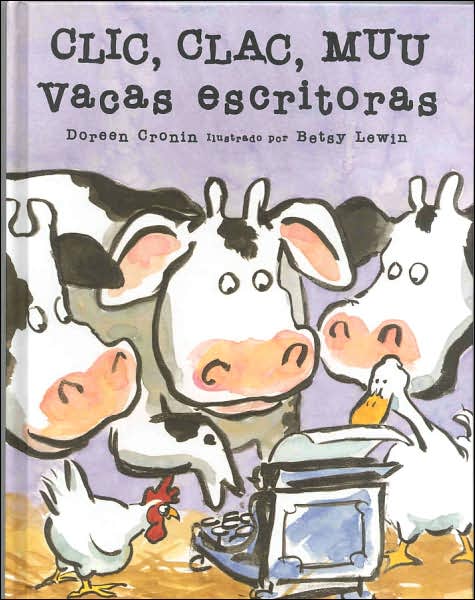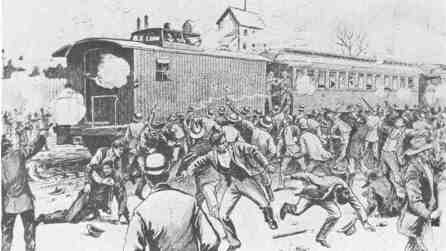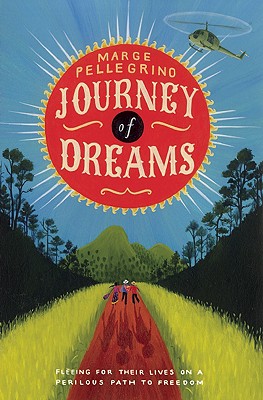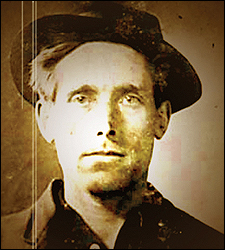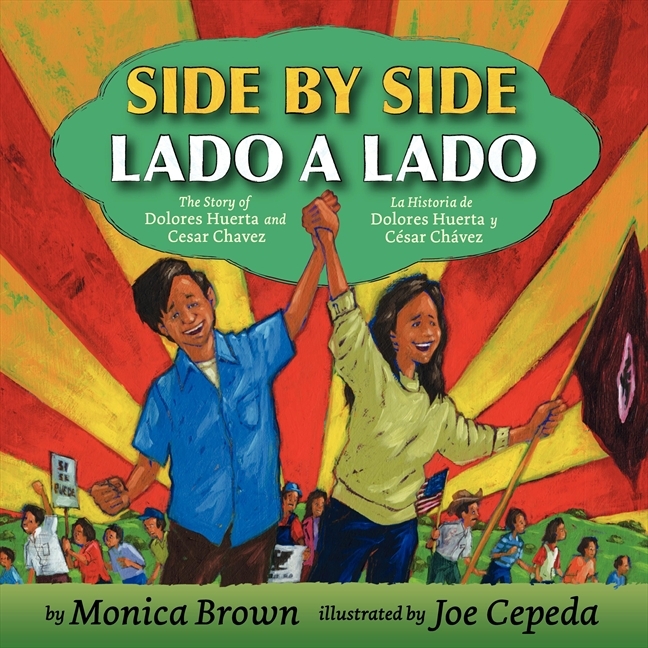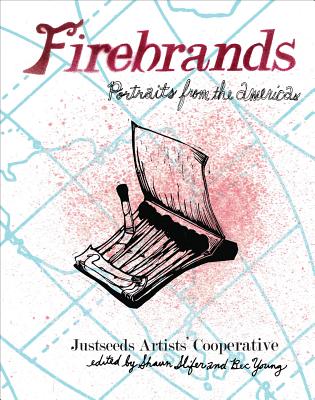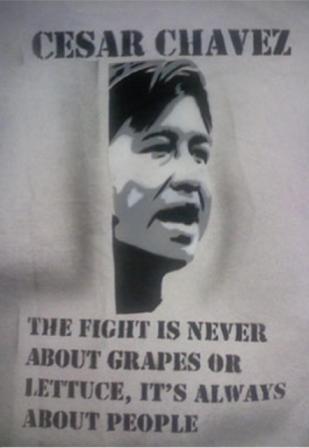Song. By Woody Guthrie. 1940.
A union song written by Woody Guthrie in response to a request for a union song from a female point of view.
Continue reading
Song. By Leon Rosselson.
The story of the 1649 revolt of the dispossessed in England who fought against the vested interest of the propertied. A vision of society that is cooperative and in harmony with the earth.
Continue reading
Song. By Ralph Chaplin. 1915.
One of the most popular labor songs.
Continue reading
Song. By Anne Feeney.
A classic American protest song sung by Peter, Paul & Mary.
Continue reading
Song. By Woodie Guthrie. Recorded in 1940.
Classic folk song written as a response to Irving Berlin's "God Bless America."
Continue reading
Picture book. By Doreen Cronin. Illustrated by Betsy Lewin. 2001. 32 pages.
A barnyard struggle where the cows go on strike and the farmer is forced to negotiate.
Continue reading
Digital collection. Developed by Mark Gregory. Over 700 union songs in an easy to search and regularly updated online collection with lyrics and audio.
Continue reading
Teaching Activity. By Teaching Tolerance.
Introduces students to the role of the labor movement in securing contemporary benefits such as the 40-hour work week, the minimum wage, and workplace safety regulations.
Continue reading
Poster. By Ricardo Levins Morales.
Poster describes the positive impact of the labor movement.
Continue reading
Poster. By Dylan Miner.
Informational poster about Roscoe Van Zandt and the Flint Sit-Down Strike.
Continue reading
Picture book. By DyAnne DiSalvo-Ryan. 2000. 40 pages.
A children's book about the benefits of a neighborhood store versus a big box store and how a community can rally to support a local business.
Continue reading
Book — Fiction. By Marge Pellegrino. 2009. 250 pages.
Historical fiction for young adult readers about the experience of Central American refugees and the long journey north.
Continue reading
Song. By David Rovics. 2010.
The benefits of a union told through historic examples in a ballad.
Continue reading
Book — Non-fiction. By John A. Stokes with Lois Wolfe. 2007. 128 pages.
First person description of the student led movement to desegregate schools in Prince Edward County.
Continue reading
Film. By Robert Townsend. 2002. 89 minutes.
Docudrama about A. Philip Randolph and the Brotherhood of Sleeping Car Porters, the first Black labor union in the United States.
Continue reading
Song. By Joe Hill. 1910.
A classic labor song, reaching out to workers to around the world.
Continue reading
Film. Produced by Nancy Kates and Bennett Singer. 2002. 83 minutes.
Documentary about the life of peace, labor, and civil rights activist Bayard Rustin.
Continue reading
Film. By Almudena Carracedo and Robert Bahar. 2007. 70 minutes.
Emmy award-winning feature documentary follows the story of three Latina immigrants working in Los Angeles sweatshops on an odyssey to win basic labor protections from a clothing retailer.
Continue reading
Picture book. By Monica Brown and translation by Carolina Valencia. Illustrated by Joe Cepeda. 2010. 32 pages.
The life stories and activism of the two founders of the United Farm Workers (UFW), written and illustrated for young children.
Continue reading
Book — Non-fiction. By Randy Shaw. 2010. 347 pages.
The impact of the United Farm Workers (UFW) on organizing and labor today.
Continue reading
Book — Non-fiction. By Shaun Slifer and Bec Young. 2010. 192 pages.
Images and short bios of 78 activists from throughout U.S. history and the Americas. For middle school to adult.
Continue reading
Song. By David Rovics. 2003.
Ballad about the West Virginia Coal Mine War of 1920-1921.
Continue reading
Film clip. Voices of a People's History.
Dramatic reading of Vicky Star's "Back of the Yards" by Christina Kirk.
Continue reading
Teaching Activity. By Bill Bigelow. Rethinking Schools. 16 pages.
In this lesson, students explore many of the real challenges faced by abolitionists with a focus on the American Anti-Slavery Society.
Continue reading
Teaching Activity. By Andrew Reed. Rethinking Schools. 5 pages.
Teaching activity connects students to history of art as a means of protest and gives them opportunity and skills to create their own stencil with a powerful message.
Continue reading






